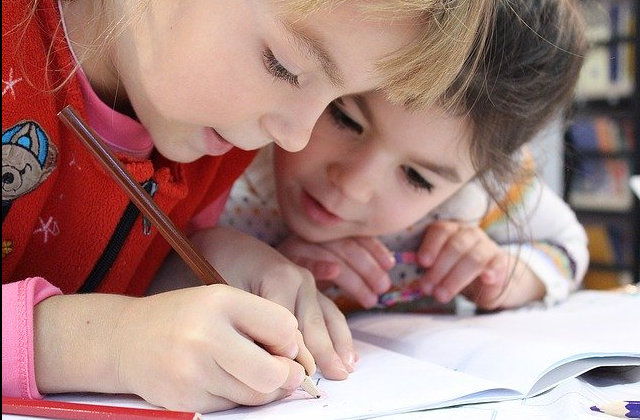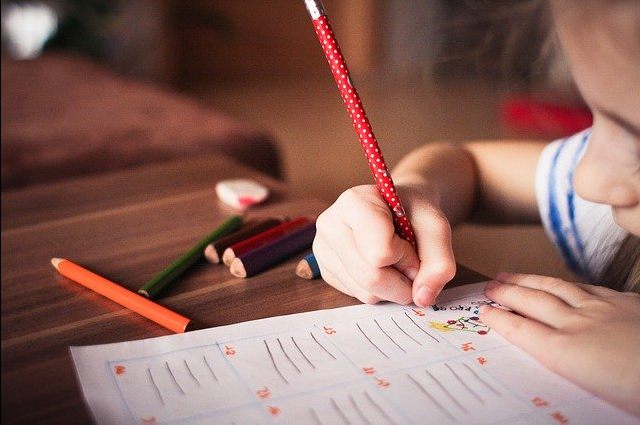Journaling for Kids

Journaling for Kids
Benefits of Journaling for Kids
If you thought journaling is only something teens and adults could do, you’re in for a big surprise! While it might look a little different for kids, depending on their age, they can benefit a lot by writing in a journal. Here are some of those benefits.
Kids Get to Express Their Feelings in a Safe Environment
Journaling provides a safe, private, non-judgmental space for kids to write about anything they want, including what they are thinking or feeling. It is important that as a parent, you allow your children’s journals to remain private and only for their eyes, unless they ask otherwise.
While your kids probably feel safe talking to you about certain things, they also need a place that is all theirs. Where they know they won’t have a voice on the other end commenting on it. Kids can really flourish just being given a journal that is private, that you promise to never read unless they ask you to. You will be amazed by how much less stressed your kids become.
It Can Improve Their Writing and Reading Skills
The more your kids write and read what they write, the more these skills are going to improve! Think about all the times your children currently write or read anything. It is probably mostly for school and homework, maybe some reading on their devices or books they love. But what about writing? Kids very rarely write much aside from school work.
Journaling gives them a daily practice where they can improve their writing skills, but in a way that ends up being enjoyable for them. They answer fun questions like what their favorite animal is and if they could be any tree, what would they be? It doesn’t feel much like homework.
Kids Become More Creative
Journals have also been known to help children become more creative. Not just with the way they work out what they want to write, but in how they design their different journal pages. Kids often excel when they can use color and design on their journal pages.
You might want to try out blank journal pages without lines, so they can treat it like a doodle page. Provide crayons, colored pencils, watercolor, stencils, stickers, and different types of pens. You will be able to see where your child’s mind goes when they are using their journal.

Journaling Helps with Critical Thinking and Communication Skills
Writing in a journal can also help kids of different ages develop more critical thinking
skills and even improve their communication skills. It takes a little critical thinking to answer a question asked in a writing prompt, even one that might seem simple to you. This is a wonderful skill for kids of any age to learn through journaling.
Setting Up a Journaling Routine for Kids
Once you have decided to have your kids write in a journal, you might want to consider a routine. The routine comes in handy because it gets your kids used to writing in their journal, just like brushing their teeth or doing their homework. But you don’t want it to feel like a mandatory chore, or they won’t really benefit from it.
Here are some simple ways to create a journaling routine that is kid-friendly.
Choosing the Best Time
Think about the perfect time during the day when you could have the routine. For kids, this will depend on their school, homework, and other obligations. This might be in the morning if your kids tend to have a little extra time before school, right after school when they get home, or maybe in the evening before dinner. You can have TV or computer time as a reward after they have done their daily journal practice.
Having a Dedicated Journaling Space
It doesn’t have to be elaborate, but simple a space at their desk in their bedroom or a corner of the kitchen table. Have the journaling materials readily available, like a journal or notebook and writing utensils. You can have some decorative items or music if you think it would help your kids concentrate and get more excited for journaling. When it is a space they recognize as their writing space, it makes it much easier to turn this into a routine.
Providing What Your Kids Need
Make sure your kids have everything they need for journaling, which can be simple and inexpensive. You don’t have to buy the most expensive leather-bound journal and hundreds of dollars worth of craft supplies. Start slow, with just any notebook you think your kids will want to write in, and something to write with. You can slowly start incorporating more writing materials and other supplies.
Letting Them Change the Routine as Needed
Pay attention to when your kids are excited about journaling, and when they have trouble focusing. This can be an indication of when it might be time to make minor adjustments to their journaling routine. Maybe you notice one of your kids prefers writing in the morning, but their sibling focuses better after homework is done. It is okay to make the journaling routine individual and unique for each of your kids, just as unique as they are.

Kids’ Journaling Idea: Kindness Journal
A kindness journal is exactly what it sounds like; a journal that helps kids to spread kindness and improve their own positivity and gratitude. Kindness journals allow your kids to maintain a positive attitude, see all the beauty in the world, and want to help others be happy and kind, passing it around from person to person.
How Kids Can Use the Kindness Journal
It is best to keep the kindness journal separate from other types of journals, like a gratitude or daily journal. With the kindness journal, there are a few things they can write about.
What Kindness Means to Them – Start by keeping it basic by letting your kids write in their journal about what they think kindness means and why it is important.
Ways They Practice Kindness – Let your kids use writing prompts that help them discover ways they can practice more kindness, make lists of random acts of kindness, and make lists every day of anything they did or said that was nice for the other person.
How They Can Help People Who Are Not Kind – This is a difficult topic to approach for some kids, but teaching them why others might not seem as kind is really important. Let your kids explore the reasons why someone else’s attitude might be a little different, and really understanding the differences between people and their life experiences.
Making it Easier for Kids
This also provides another opportunity for your kids to be creative and have fun with it. In their kindness journal, they might want to sketch out ideas for what they can do for other people, draw illustrations showing the kindness they showed, or draw images that makes them think of things that are sunny, happy, and nice to be around.
Journal Prompts for the Kindness Journal
Journal prompts are a type of writing prompt, giving your kids a subject to write about. You can create ones specifically for spreading kindness. Think about what they might write about how to be kind, and this can tell you what prompts would be good for them to use in the kindness journal. Remember that prompts can be a question or statement they use to know what to write about.
For example:
What is something kind you did today?
How did you help someone?
How did someone help you?
How do you feel when someone does something nice for you?
Who is the last person you smiled at?

Mindfulness for Kids
Mindfulness is so much more than a trend or buzzword. It is a way to live your life, where you focus on the present, give your full attention to whatever you are doing, and really start to slow down and appreciate each moment in your life. It is not just for adults. Kids can really benefit by incorporating more mindfulness into their life. It is an excellent practice to start at a young age.
Is Mindfulness Different for Kids?
Mindfulness doesn’t change in its definition for kids as compared to adults, but the benefits and teaching of it might be slightly different. For kids, they are just learning how what they focus on and think about is going to change their perspective. Even at a young age, kids can develop the skills to focus on the present, and not worry so much about either what has already happened, or what still hasn’t happened yet.
Benefits of Practicing Mindfulness
Why should kids practice mindfulness? Here are some of the top benefits.
They will improve their focus and concentration. Mindfulness is the act of focusing on the present, so the more your kids can do this in their journal, the easier it becomes to do naturally without even thinking about it.
It teaches them to remain calm in stressful situations. Through mindfulness, your children will develop skills to remain calm, because they know it is just in this moment, and it will pass.
It lowers anxiety in kids and teens. Anxiety in general is often improved among
anyone who practices mindfulness, including your kids and teens.
They often have more patience in times of anger. When your kids get angry, mindfulness can help them calm down and have more patience.
Mindfulness helps with gratitude. A big part of being mindful is showing gratitude and appreciation for the blessings of the current moment.
Tips to Help Your Kids Be More Mindful
You can also help your kids to become more mindful with very simple practices. This of course includes journaling, but other activities as well. In addition to journaling, you might try:
Sitting together to draw a picture of how you feel in this moment.
Showing your kids how to eat without distractions and focus on their meal.
Tell your kids to write about the last thing they were thinking about, anything that was on their mind.
These are simple ways to learn how to be more mindful.

How to Get Kids Excited About Journaling
If you have kids who are able to write basic sentences, they are old enough to start writing in a journal. But are you concerned that they won’t be interested in it? It can be a new medium for kids who might have grown up using tech, but is so worth it. Here are some easy ways to get your kids excited for journaling.
Let Them Choose Their Own Materials
You want your kids to WANT to write in their journal? Let them choose what they use! This makes such a drastic difference in children’s attitude about journaling. It takes journaling from something they feel like they have to do, and makes it something they enjoy doing.
This doesn’t just mean the journal itself, though that is a great place to start. It also includes any other supplies you decide to get for them. This might be different colored pens, colored pencils and crayons, stencils, stickers, and stamps. Bring your kids to the craft store to let them pick out their own supplies.
Use the Rewards System
In the beginning, your kids might not yet be super excited about journaling, but that’s ok! /you can give them a little extra encouragement by using some type of rewards system. This might be a chart in their room where you put a star for each day they use their journal, then give them rewards for a number of stars in a row, or you can increase their allowance for writing in their journal. The rewards don’t matter as much as the consistency.
Find Fun and Creative Writing Prompts
Writing prompts are optional, but they do help when your kids aren’t really sure what they should be writing about. Be sure to select writing prompts appropriate for your child’s age, as a prompt for a 12 year old isn’t going to be easy for a 6-year old to make sense of. You will find a wide range of them online, or you can create some of your own by tweaking the ones you find that others have written.
Set Up Their Writing Space
Try to have a designated area in your home where kids know they can go to for quiet, private journaling. This helps in a few different ways. First, it gives your kids a reason to use this space, where they start recognising it as part of their journaling routine. It can also be a quiet space for your kids to pay attention to their journaling practice without distractions.
